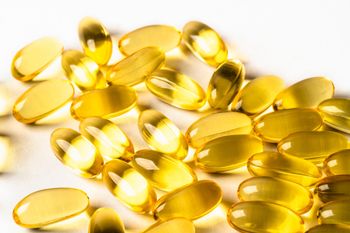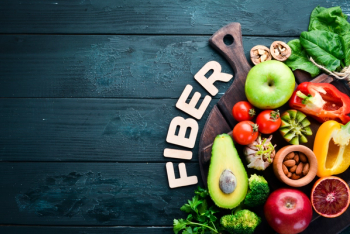
All About Lecithin: What makes lecithin a powerhouse ingredient in food, drinks, and supplements?
Lecithin is widely used in animal feed, nutritional supplements, and infant nutrition because, on top of exhibiting excellent functional properties, it provides great nutritional benefits.
Emulsifiers are essential ingredients in many foods and nutritional products, aiding in the mixing of oil and water ingredients. In fact, food and drinks account for nearly one-third of the total global consumption of emulsifiers. Lecithin is one of the most popular emulsifiers. Given lecithin’s current rate of global adoption and usage, the market for food-grade lecithin is expected to exceed 620,000 tons by 2028.
Lecithin is widely used in animal feed, nutritional supplements, and infant nutrition because, on top of exhibiting excellent functional properties, it provides great nutritional benefits. Additionally, it has always been a fascinating area of study for food specialists looking to lecithin for brand-new benefits, such as improved texture or longer shelf life.
And although lecithin has long been used as an emulsifier in infant nutrition and other food applications, it is now becoming popular in dietary supplements for its nutritional properties as well.
Lecithin: The What and Why
Lecithin is a multifunctional additive with numerous applications in confectionery, dairy, cosmetic, pharmaceutical, animal feed, and bakery products. It is one of the most widely used and popular emulsifiers, accounting for approximately 30%-40% of emulsifier consumption in the food and nutrition industry. Lecithin is widely used in the European market, accounting for more than 25% of total emulsifier revenue regionally as the demand for baked goods in the vicinity is high.
On an industrial scale, lecithin is primarily derived from soybean, sunflower, and rapeseed. Soy is the most common source of lecithin because of its excellent binding properties, and South America is the leader in soybean production. Sunflower lecithin is also used, but its price has risen due to supply constraints caused by the Ukraine war.
The traditional method of producing lecithin from oilseeds involves the use of hexane, which the U.S. Centers for Disease Control and Prevention classifies as a neurotoxin and which the Environmental Protection Agency classifies as a hazardous air pollutant. Thus, the use of hexane in lecithin extraction is always a concern. To avoid it, hexane extraction can be replaced with a mechanical extraction method of production; however, the price of mechanically extracted lecithin is higher than conventional prices, making it difficult for mechanically extracted lecithin to compete in the lecithin market given the ongoing high demand for the ingredient.
As the demand for organic food products grows around the world, many leading suppliers, including Archer Daniels Midland Company and Cargill, are expanding their portfolio of non-GMO soy lecithin. Other key competitors in lecithin include Sonic Biochem Extraction Pvt. Ltd., DuPont Nutrition & Biosciences (now merged with IFF), Lipoid GmbH, Agro Solvent Products Pvt. Ltd., and others. Many of these players have also included plant-based sources like canola and rapeseed in their portfolio. Although rapeseed and canola supply is still associated with agriculture, including these other sources allows these companies to meet lecithin demand in the coming years.
Lecithin’s Footprints in Different Nutritional Applications
Infant Formula
One of the most important applications for lecithin in the food industry is infant nutrition. Infant formulas are often formulated as oil-in-water emulsions. There are two kinds of emulsifiers used in infant nutrition: protein-based and non-protein-based. Protein-based emulsifiers include milk protein isolate, whey protein concentrate, skim milk powder, and so on, whereas non-protein-based emulsifiers include lecithin, mono- and diglycerides, and gums.
Soy lecithin is primarily used in infant formulas, particularly in ready-to-feed or concentrated liquid products. Its emulsification, wetting, and dispersing properties aid in the dissolution of infant formulas in hot and cold liquids, such as water, for reconstitution. Lecithin also improves the stability of these products by preventing surface oiling, creaming, and sedimentation.
Human milk contains a variety of phospholipids, including phosphatidylserine, phosphatidylethanolamines, and others. These phospholipids are extracted from lecithin and used to promote cognitive development in children via infant formula and products such as growing-up milk. Due to its high water solubility, phosphatidylcholine is widely used in these products.
Dietary Supplements
Lecithin is used in dietary supplements for its nutritional and emulsifying properties in the form of capsules, tablets, and powder. Lecithin is primarily derived from crude soy for use in dietary supplements; however, due to soy’s potential allergenicity, sunflower lecithin can be used as a replacement for soy lecithin instead.
Lecithin can lower LDL (bad) cholesterol levels while increasing HDL (good) cholesterol levels in the body, lowering the risk of heart disease. According to research, lecithin can boost immunity, particularly in diabetics. Because of its emulsifying properties, lecithin can also break down and dissolve fat molecules, which aids the body’s fat processing and movement, as well as the absorption of fat-soluble vitamins like A, D, E, and K.
Lecithin is also a rich source of phospholipids like phosphatidylcholine and phosphatidylserine. Phosphatidylcholine is known to have several health benefits, like improving brain health. As phosphatidylcholine is a major component of the intestine’s mucous layer, its supplementation can support healthy digestion. It can also help patients suffering from ulcerative colitis by reducing inflammation.
Lecithin is also used to make phosphatidylserine, which is a popular ingredient in brain health supplements. It provides cognitive benefits such as increased focus, memory, concentration, and energy. It is widely preferred due to its light color and neutral taste. Phosphatidylserine is also available in combination with other phospholipids such as phosphatidylcholine and phosphatidic acid, both of which are popular nootropic supplements.
Functional Foods and Beverages
Lecithin is widely used in the production of functional foods such as meal-replacement drinks, fortified cereals and margarine, and health drink powders. It can help with cardiovascular health, which is why it is popular in meal-replacement products. Natural ingredients such as lecithin are becoming more popular as the demand for natural and organic products grows.
The Way Forward
Lecithin has long been used as an emulsifier in infant nutrition and other food applications, but it now has a growing profile in supplements as well. Lecithin is also high in phospholipids (phosphatidylcholine, phosphatidylethanolamine, phosphatidylinositol, and phosphatidic acid), which are already well known for their health benefits and which may help lecithin gain further popularity as a supplement.
On the other hand, sunflower lecithin is expected to grow in popularity as a clean-label, non-allergenic substitute for soy lecithin. There have been numerous launches involving the use of non-GMO grade lecithin on the market. However, the main challenge has been the disrupted supply chain and price fluctuations.
The numerous health benefits that lecithin offers will spark rapid growth of lecithin-based products in the coming years.
About the Author
Dwiti Gaggar is an associate consultant, food and nutrition, at
Newsletter
From ingredient science to consumer trends, get the intel you need to stay competitive in the nutrition space—subscribe now to Nutritional Outlook.





